Benito Mussolini is the Italian fascist dictator who ruled Italy from 1922 until 1943. He was deposed, captured, and ultimately assassinated by Italian partisans in 1945.
A skilled politician, Mussolini earned respect throughout the world up until the start of World War II. During the war, he allied with Hitler’s Germany. However, his military weakened from previous conflicts, could not withstand the Allied adversaries. His reign ended as Dictator of the German puppet state of the Italian Social Republic.
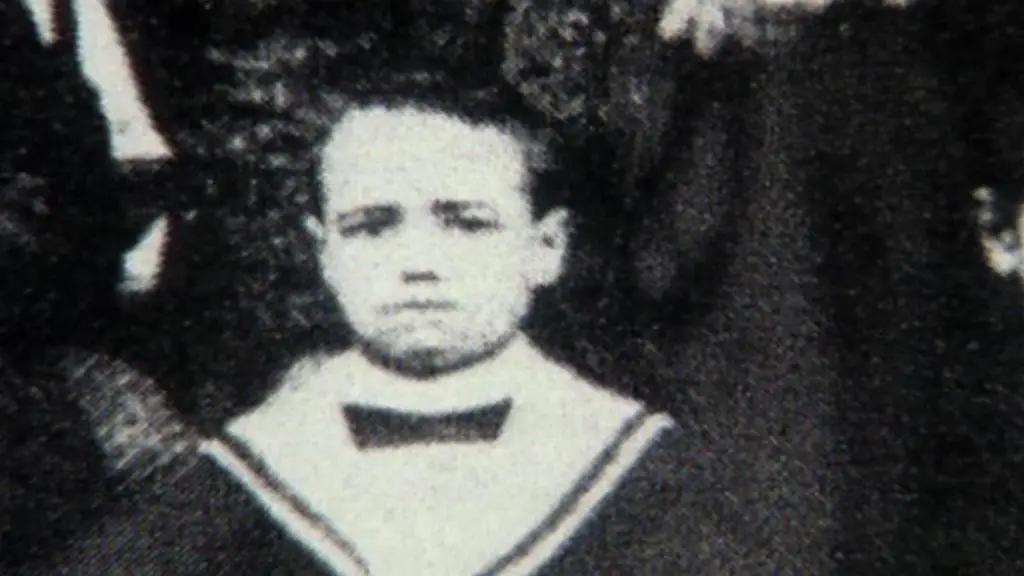
Mussolini as a child.
Early Life of Benito Mussolini
Benito Amilcare Andrea Mussolini was born on 29 July 1883, in the town of Varnano dei Costa near the village of Predappio. Mussolini’s father, Alessandro, was a blacksmith, and his mother, Rosa Maltoni, a teacher [1].
Benito’s father was a socialist. As an admirer of the Mexican revolutionary Benito Juarez, Alessandro named his son after the patriot and hero. As Mussolini grew older, he initially followed in his father’s political footsteps.
After completing primary school, he obtained a teaching diploma and worked part-time as a schoolmaster [3]. In 1902, Mussolini moved to Switzerland to avoid mandatory military service. However, he was arrested and expelled from Switzerland for advocating strikes and later falsifying documents.
Socialism and Journalism
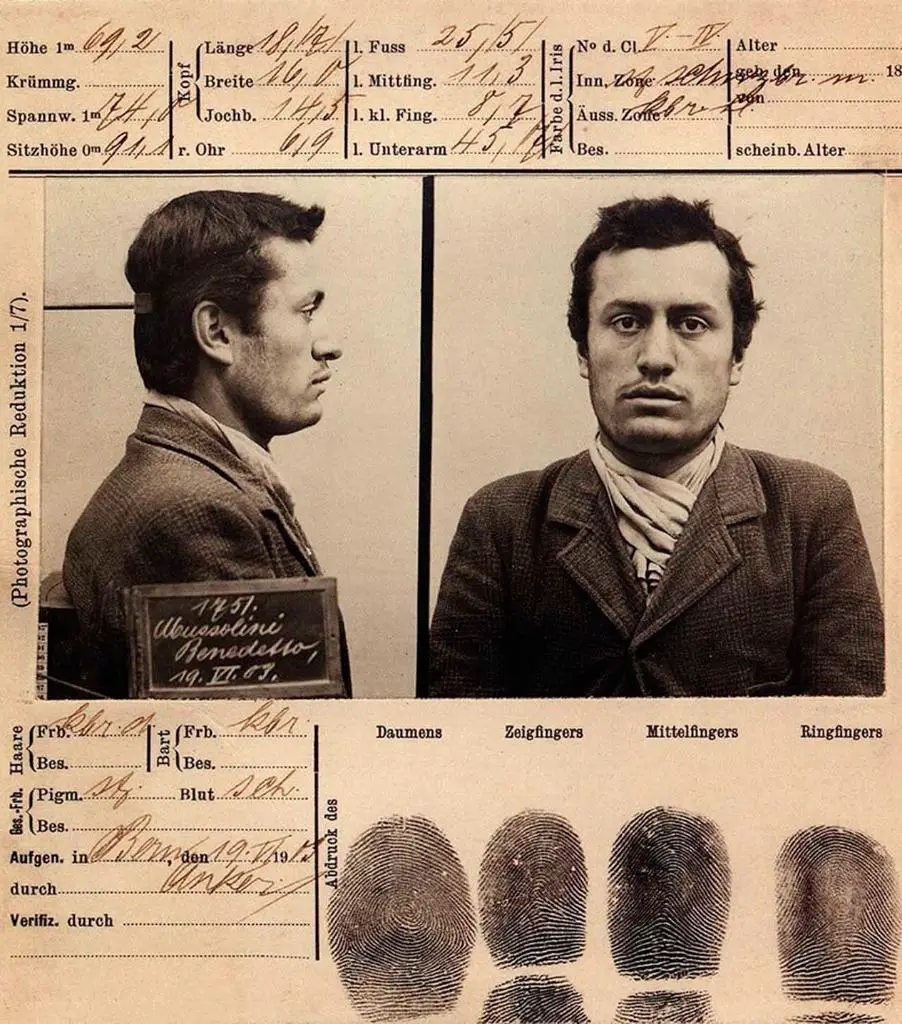
Benito Mussolini was an avid writer. In 1909 he earned a position with the Il Popolo newspaper in Trento, Austria. During this time, he wrote a novel, L’amante del Cardinale: Claudia Particella, romanzo storico, which was translated into English.
Mussolini served another five-month jail term for rioting against the war in Libya.
In 1914 he became Director for the Milan Socialist paper “Avanti” and dramatically increased its circulation. He became popular among the Italian socialists. However, he soon started promoting an interventionist campaign against Germany in World War I.
This infuriated the Socialists who were against Italy’s entry into the war and expelled him from the party [2]. In 1915 Mussolini formed his own paper, Il Popolo d’Italia, and continued his promotion for war
Rise of Fascism
Mussolini’s brother, Arnaldo, was an important architect of the original idea of fascism. Interested in absolute power, Mussolini abandoned his ideals of socialism in exchange for fascism.
In the late fall of 1914, Mussolini founded a pro-war group, Fasci d’Azione Rivoluzionaria, along with Il Popolo d’Italia, a newspaper which subscribed to the fascist ideology. He hoped the war would bring about an opportunity to bring himself to power.
When Italy joined the Allies to fight Germany, Mussolini enlisted in the Regio Esercito. Mussolini achieved the rank of Corporal, the same rank carried by Adolf Hitler. He was discharged in 1917 due to shrapnel wounds obtained while in a trench. He returned home an antisocialist and advocate of regime change in Italy.
Post-WWI Italy
After the war, Italy was in turmoil. The economy was shattered and strikes and protests appeared everywhere. Action needed to be taken to fix the political and economic crisis gripping Italy in the aftermath of World War I. Mussolini believed he was the man to do it.
On 23 March 1919, Mussolini and several other veterans formed the Fasci Italiani di Combattimento. This party grew in popularity among the people of Italy disenchanted with the chaos surrounding them. The party quickly reached over 200 members. However, his bid in the 1919 elections failed. But on 15 March 1921, Mussolini along with 35 other Fascists won seats in the Italian Chamber of Deputies.
Fascism and Elections
Fascism was not the protector of any one class, but a supreme regulator of the relations between all citizens of a state.
Anarchy had spread under the liberal government of Luigi Facta, Ivanoe Bonomi, and Giovanni Giolitti. People were run out of town, killed, or beaten by the thousands. Socialist party newspapers, employment centers, and union offices were burnt down or looted during the “Biennio Nero”, or the “two black years”, of 1921 and 1922. Any opposition to fascism was destroyed by Blackshirts or “Squadristi” during this time.

Mussolini in November 1922. Image colorized by Klimbin
The government did not interfere with the activities of the Blackshirts. However, in exchange for support from a powerful group of agriculturalists and industrialists, Mussolini abandoned political agitation. The Blackshirts firmly controlled most parts of Italy.
March on Rome
In August of 1922, the ruling Leftist party ordered a general strike in the nation. An enraged Mussolini issued an ultimatum that if they did not end the strike, his Fascist party would. The Leftist claimed he was trying to siege the government, but the armed forces wanted nothing to do with stopping the fascists from preventing the strike. On 29 October 1922, King Vittorio Emanuele III asked Mussolini to come to Rome and form a government. Mussolini insisted on a telegram and the King wired it soon afterward. He boarded a train for Rome and found himself greeted by thousands of Fascist Blackshirts upon his arrival.
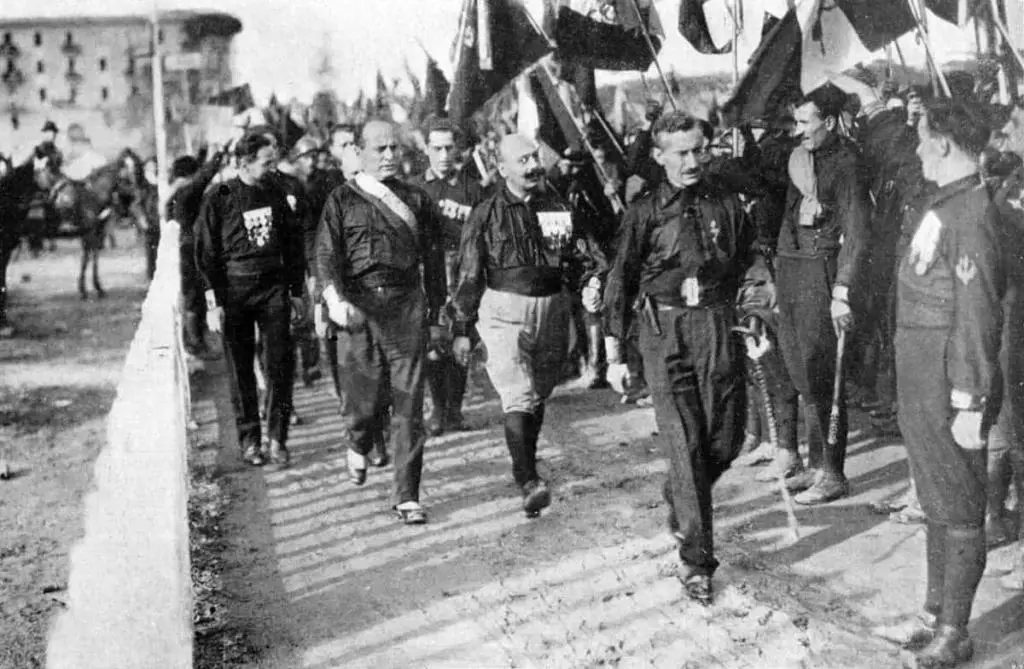
The March on Rome in 1922.
This became known as the famous “Marcia su Roma”, or March on Rome on 28 October 1922. [4]
The Liberals in the Italian parliament initially supported Mussolini. They helped him change election methods and create strict censorship policies. In a short period of time, he successfully stabilized the economy and took his country out of economic turmoil.
Democracy is beautiful in theory; in practice it is a fallacy. You in America will see that some day.
Rise of Il Duce
Benito Mussolini took complete control of the press and used it to create the mythology of Il Duce (the Leader). He is a man who never errs and has the right answer to every economic and political problem. Mussolini immediately instituted a police state and dealt ruthlessly with any opposition.
– Giacomo Matteotti
On 10 June 1924, Giacomo Matteotti, a socialist who opposed Mussolini was kidnapped and killed by three fascist militants. Although Mussolini never became implicated in the crime, he was accused of orchestrating it. The public showed surprisingly little opposition to Mussolini’s ruthless behavior because of his adept use of propaganda.
Foreign Policy
– Corfu Incident
His first international crisis as head of Italy made him an Italian hero. The crisis was a border dispute between Greece and Albania. Mussolini sent several men to the area representing Italy as part of an International Commission to dispute the issue. On 23 August 1923, the Italians were murdered and discovered in Greek territory. In a rage, Mussolini sent the Greek government a list of demands, including a public apology, immediate inquiry into the killings, death sentence to those convicted and payment of 50 million Lira within five days. The Greeks refused the demand since the killers remained unidentified
Mussolini ordered the Italian navy to bombard Corfu (Kerkyra) off the Greek coast. An amphibious landing by Italian marines followed the shelling. After the League of Nations condemned the act, Mussolini threatened to pull Italy out of the League.
He insisted that the Conference of Ambassadors, who formed the original mission in the first place, must arbitrate the dispute. France, wanting Italy’s support over the mineral-rich Ruhr Valley, sided with Italy. As a result, the Conference of Ambassadors endorsed most of Italy’s position. The Greek government gave in and agreed to Il Duce’s demands. This victory was immediately followed by Mussolini sending elements of the Italian Esercito into the city of Fiume and annexing it from Yugoslavia.
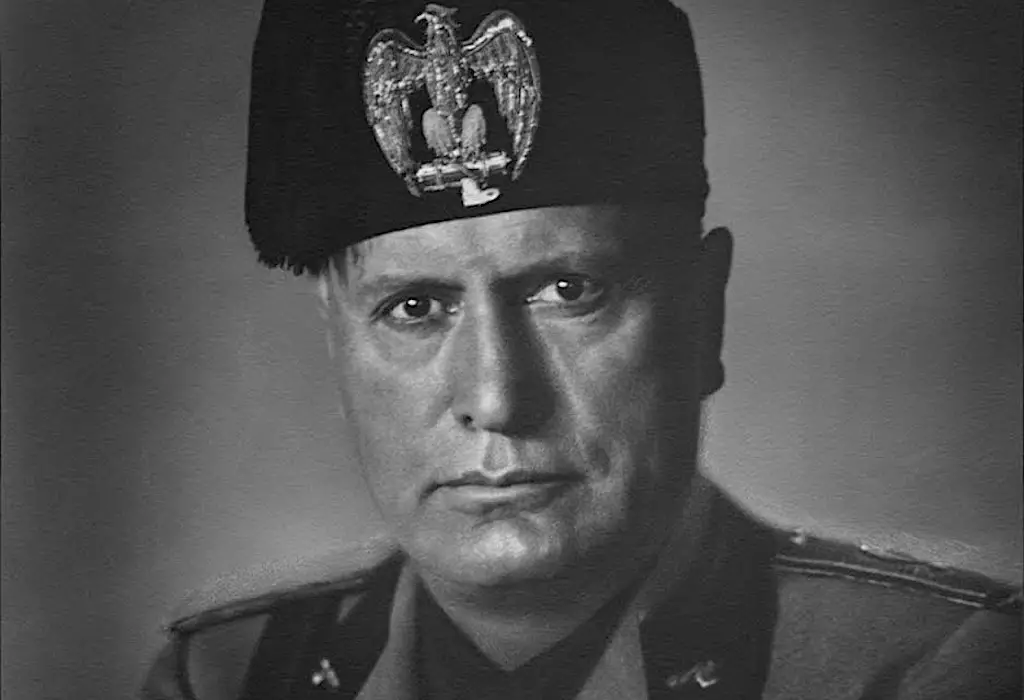
Mussolini became a British Knight of the Bath, but the United Kingdom canceled this Knighthood in August of 1940.
– Mare Nostrum
Although Mussolini quenched his thirst for power, he remained enraged by the treatment Italy received for their part in defeating the Germans and Austrians in World War I
Mussolini instituted an aggressive nationalist foreign policy. His vision was to take over the Mediterranean and make it “mare nostrum”, or “our sea.”
– Defense of Austria in 1935
At the 1935 Stresa Conference, Mussolini helped create an anti-Hitler front to defend Austria’s independence from Germany’s Anschluss.
– Conquest of Abyssinia
He launched a successful war against Ethiopia, known then as Abyssinia. Just one year later, in 1936, he would seek an alliance with Nazi Germany after his conquest of Abyssinia was condemned by the League of Nations. Italy left the League of Nations in 1937 after they imposed sanctions.
League of Nations
The League of Nations blacklisted Italy which forced Mussolini into a closer alliance with Germany, a country already isolated by the League of Nations. Mussolini soon realized that the League of Nations did not have the backbone to stop Hitler or himself.
In 1938, Italy and France were close to war. Mussolini announced he wanted to annex Tunix, Nice, Savoy, and Corsica. France, of course, objected.

Adolf Hitler visits Benito Mussolini in Rome, Italy on 3 March 1938. Image: Hugo Jaeger—Time & Life Pictures/Getty Images.
World Statesman
On the world stage, Mussolini earned the reputation as a great negotiator and influential statesmen, but also as an aggressive nationalist. Mussolini alienated France and Britain when he sided with General Francisco Franco in the Spanish Civil War from 1936 to 1939.
Additionally, Mussolini informed Germany that Austria was “immaterial” signifying Italy’s permission for Germany to annex Austria in 1938.
I will never forget him for this…. Never, never, never, no matter what happens!
Although he had played the part of a moderate seeking peace in Europe, he made a public turn in May of 1939 when he signed the ‘pact of steel’ with Hitler.
Italy invaded and occupied Albania following a short battle in April 1939.
Relationship Between Hitler and Mussolini
Hitler admired Mussolini as a world leader and studied his rise to power. On the other hand, Mussolini had other thoughts on Hitler. Mussolini found Hitler’s book Mein Kampf boring and Hitler’s ideas as simplistic. Hitler’s long-winded speeches annoyed Mussolini, who considered himself to be the more intelligent of the two.
War is to man what motherhood is to a woman. From a philosophical and doctrinal viewpoint, I do not believe in perpetual peace.
As time went on, Italian and French relations continued to sour and the United Kingdom showed little inclination to side with Italy. Hitler and Mussolini’s partnership grew.

Mussolini, Hitler and King Vittorio Emanuele III.
Hitler and Mussolini both supported Francisco Franco in the Spanish Civil War. When Italy invaded Ethiopia, Germany was the second country to recognize Italy’s victory.
As the world war loomed closer, Mussolini began to take a subordinate role to Hitler, much to his dissatisfaction.
Mussolini’s Racial Laws
Due to German influence, Mussolini agreed to establish racial laws called the Manifesto della razza (Race Manifest) written on 14 July 1938. The Italian government announced the ant-Jewish laws on 1 September 1938. These policies included:
- Italians are descendants of the Aryan race.
- Prohibition of sexual relations and marriage between Jews or Africans with Italians.
- Prohibition of Jewish employment in banking, government, and education.
- Italian citizenship of Jews revoked.
- Confiscation of Jewish personal property.
These laws proved to be very unpopular with the Italians.
World War Two
Italy modernized its military early and by 1939 it’s forces were considered obsolete. Italy was also a relatively poor country and its military campaigns in the Spanish Civil War and Abyssinia left the country in financial and military distress. [5]
In 1939, Hitler invaded Poland. Mussolini stayed neutral, while France and Britain declared war against Germany. However, Mussolini became convinced that Germany would win the war following its decisive and quick victories.
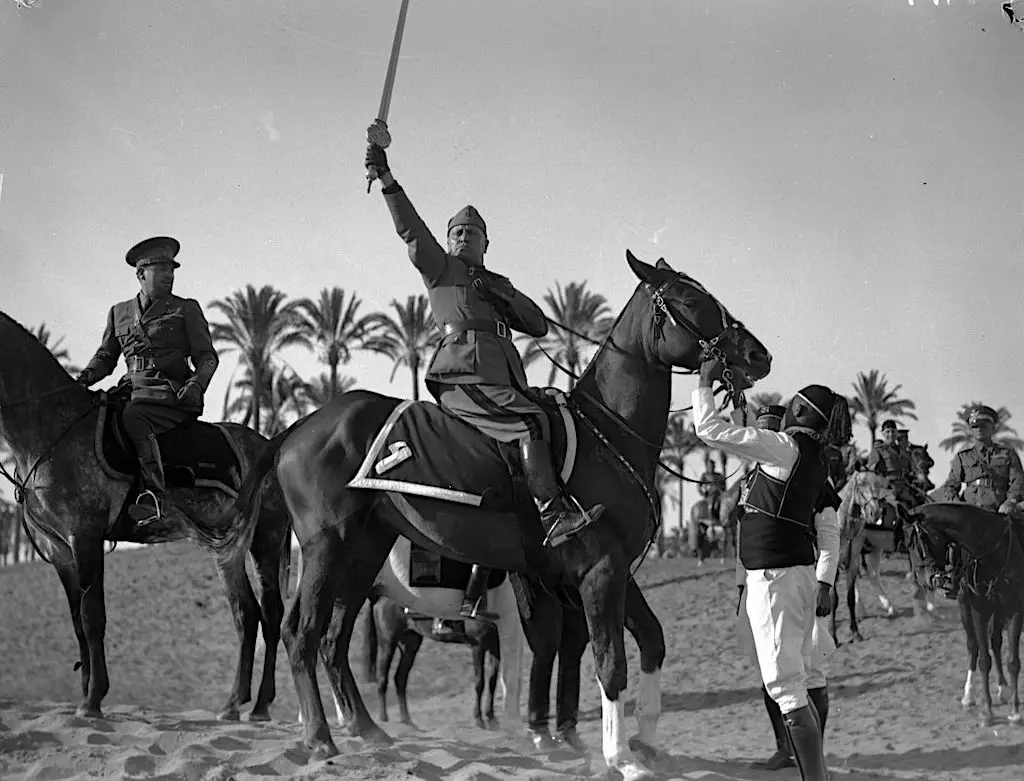
Il Duce on an Arabian horse in Libya, March 1937. Mussolini is holding the “Sword of Islam” .
When France fell to Germany, Mussolini believed the war might end quickly. He declared war on 10 June 1940 in order for Italy to lay claim to some of the spoils of war. He attacked Greece in October, but the action was a military disaster. Germany diverted some resources in order to secure a Balkan victory. Undaunted by the mediocre performance of Italian forces, Mussolini followed Hitler in declaring war on the Soviet Union and the United States respectively.
Italy achieved limited success in the war. Its conquests in Africa, Greece, and Yugoslavia slowly vanished due to poor military leadership and the use of obsolete weaponry. The Regia Marina achieved limited results due to a lack of fuel. By 1943, Italy was losing the war.
Fascist Grand Council Votes Him Out
By 1943, Italy suffered defeats on all fronts. At a meeting of the Fascist Grand Council on 25 July 1943, the majority of Mussolini’s Grand Council turned against him which enabled the king to dismiss and arrest the dictator.
Mussolini was kept in isolation in Gran Sasso. In the meantime, General Pietro Badoglio took the place of Mussolini. He gave a famous speech, “La Guerra continua a fianco dell’Alleato Germanico”, which translates to, “War continues at the side of our German allies.” Behind the scenes, however, he was negotiating Italy’s surrender.
The Germans rescued Mussolini and propped up as the leader of the Salo Republica, or Repubblica Sociale Italiana. However, Mussolini had little real power by this time.
Better to live a day as a lion than 100 years as a sheep.
Death
On 28 April 1945, Italian partisans arrested Mussolini and his mistress Clara Petacci by Lake Como. Walter Audisio (1909-1973), once pardoned by Mussolini for a jail term in 1934, assumed custody of Mussolini and Petacci.

The bodies of Nicola Bombacci, Mussolini, Petacci, Pavolini and Starace hung in Piazzale Loreto, Milan 1945.
Benito Mussolini, realizing he was going to die, opened up his shirt and asked to be shot in the chest. Audisio complied and attempted to shoot the pair with an Italian submachine gun, but it did not fire. He then pulled out an Italian pistol and again it did not fire. In desperation, he grabbed a French MAS 7.65, from a fellow partisan and killed Il Duce, his mistress, and their escorts.
The following day, partisans hung their bodies in Piazzale Loreto in Milan, Italy alongside those of other fascists. Later, his body was taken to the family chapel in Predappio. [6]
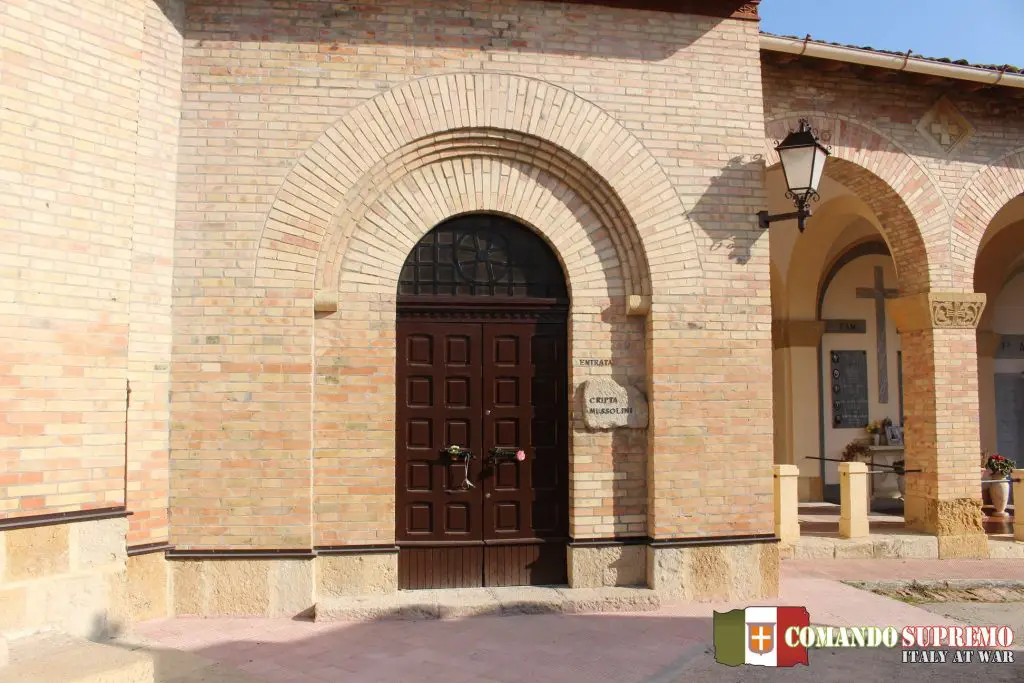
The exterior of the family crypt as it looked on 03 March 2019.
Benito Mussolini rose to power and became Il Duce, dictator of Italy during World War II. His overconfidence and early entry into the war led him to his undoing as the slender resources of his homeland became overextended in the conflict.
Links to Benito Mussolini’s Speeches
- Rome, Italy, February 23, 1941
- Before The Chamber Of Fasces And Corporations
- Mussolini’s War Statement
- Before The Chamber Of Fasces And Corporations
Sources:
[1] History.com
[2] Jewish Virtual Library
[3] Britannica
[4] Scholar
[5] Lumen Learning
[6] Academia.edu